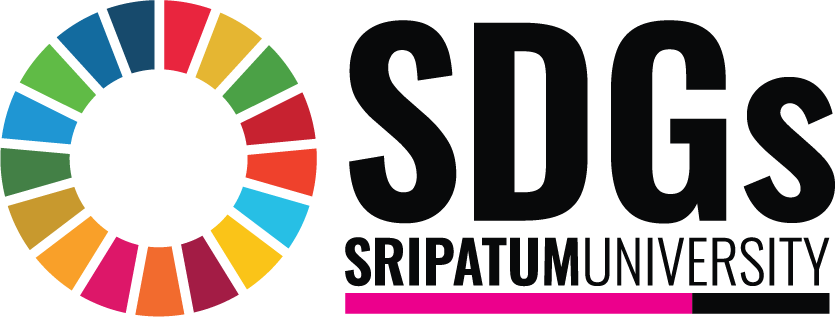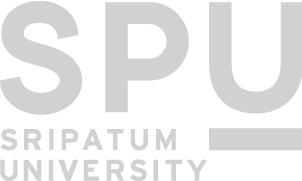
SPU’s Clean Energy Leadership Slashes Carbon Emissions by Over 200 Tons Annually
Sripatum University (SPU) is powering Thailand’s clean-energy future with bold climate actions that slash carbon emissions by up to 211 tons per year. From solar rooftops to smarter cooling systems, SPU is proving how universities can lead in reducing carbon pollution while advancing Sustainable Development Goals (SDGs) through innovation and infrastructure redesign.
At the heart of this impact is the solar panel system installed on Building 11, generating zero-emission electricity and reducing fossil-fuel dependence—directly aligning with SDG 7.5.1 (percentage of total energy from low-carbon sources) and SDG 13.2.2 (total energy from low-carbon sources). This single project alone delivers a 116-ton cut in CO₂ emissions annually. But SPU went further.
The university also upgraded its air-conditioning systems, leading to a 30–50 ton reduction in carbon output per year. Complemented by LED lighting replacements across the campus, which further cut emissions by 20–30 tons, and heat-reflective curtain installations that save an additional 10–15 tons, SPU’s total carbon reduction now exceeds 200 tons annually. These initiatives exemplify strong alignment with SDG 7.2.3 (CO₂ reduction strategies), SDG 13.2.1 (tracking of low-carbon energy use), and SDG 9.2.1 (infrastructure innovation impact).
Beyond carbon metrics, these actions promote energy efficiency (SDG 12.2.1), responsible consumption (SDG 12.3.1), and operational sustainability within campus facilities. The projects demonstrate how environmental engineering, facility planning, and policy interventions converge in a whole-of-institution approach to sustainability.
SPU’s long-term commitment affirms its leadership role in reducing environmental impacts and accelerating Thailand’s transition to a low-carbon future. By linking green infrastructure projects directly to academic responsibility and community impact, Sripatum University reinforces its dedication to SDG 4 (Quality Education), SDG 11 (Sustainable Cities), and SDG 17.4.1 (SDG education integration).
Sripatum University is not only reducing emissions; it is raising the bar for sustainable universities across the region.
มหาวิทยาลัยศรีปทุมลดการปล่อยคาร์บอนกว่า 200 ตันต่อปี ขับเคลื่อนพลังงานสะอาดสู่อนาคต
มหาวิทยาลัยศรีปทุม (SPU) เดินหน้านำร่องสู่การเป็นมหาวิทยาลัยพลังงานสะอาด ด้วยการลดการปล่อยก๊าซคาร์บอนไดออกไซด์สูงสุดถึง 211 ตันต่อปี ผ่านการพัฒนานวัตกรรมด้านพลังงาน การจัดการอาคาร และการใช้ทรัพยากรอย่างมีประสิทธิภาพ สะท้อนบทบาทผู้นำด้านการพัฒนาอย่างยั่งยืนตามเป้าหมาย SDGs
หัวใจของการเปลี่ยนแปลงคือโครงการติดตั้งแผงโซลาร์เซลล์ที่อาคาร 11 ซึ่งสามารถผลิตไฟฟ้าแบบไม่ปล่อยมลพิษ ลดการพึ่งพาไฟฟ้าจากเชื้อเพลิงฟอสซิลโดยตรง โดยสอดคล้องกับ SDG 7.5.1 (พลังงานจากแหล่งคาร์บอนต่ำ) และ SDG 13.2.2 (สัดส่วนพลังงานสะอาดจากการใช้ทั้งหมด) ซึ่งสามารถลดการปล่อย CO₂ ได้ถึง 116 ตันต่อปี
โครงการอื่น ๆ ที่ร่วมลดคาร์บอน ได้แก่ การปรับเปลี่ยนระบบปรับอากาศใหม่ที่มีประสิทธิภาพยิ่งขึ้น ช่วยลดคาร์บอนได้อีก 30–50 ตันต่อปี ตามด้วยการเปลี่ยนหลอดไฟทั่วทั้งมหาวิทยาลัยเป็น LED ซึ่งประหยัดพลังงานถึง 50% คิดเป็นการลดคาร์บอน 20–30 ตัน และการติดตั้งม่านกันแสงและความร้อนที่ลดภาระการใช้แอร์อีก 10–15 ตัน รวมเป็นการลดคาร์บอนรวมกว่า 200 ตันต่อปี สะท้อนความสอดคล้องกับ SDG 7.2.3 (ยุทธศาสตร์ลด CO₂), SDG 13.2.1 (การติดตามพลังงานคาร์บอนต่ำ) และ SDG 9.2.1 (นวัตกรรมด้านโครงสร้างพื้นฐาน)
นอกจากนี้ ยังสนับสนุนเป้าหมายการใช้ทรัพยากรอย่างมีความรับผิดชอบตาม SDG 12.2.1 และการติดตามของเสียและการรีไซเคิล SDG 12.3.1 รวมถึงการพัฒนานโยบายและแนวปฏิบัติที่สร้างความยั่งยืนเชิงปฏิบัติในระดับมหาวิทยาลัย
ความมุ่งมั่นระยะยาวของ SPU สะท้อนถึงบทบาทผู้นำในการลดผลกระทบต่อสิ่งแวดล้อมและเร่งการเปลี่ยนผ่านของประเทศไทยสู่สังคมคาร์บอนต่ำอย่างแท้จริง โดยเชื่อมโยงโครงสร้างพื้นฐานสีเขียวเข้ากับพันธกิจด้านการศึกษาและบริการสังคมอย่างแน่นแฟ้น ครอบคลุมถึง SDG 4 (การศึกษาที่มีคุณภาพ), SDG 11 (เมืองและชุมชนยั่งยืน) และ SDG 17.4.1 (การบูรณาการการศึกษาเพื่อ SDG)
มหาวิทยาลัยศรีปทุมไม่ได้แค่ลดคาร์บอน แต่ยังก้าวขึ้นเป็นต้นแบบความยั่งยืนระดับภูมิภาค


